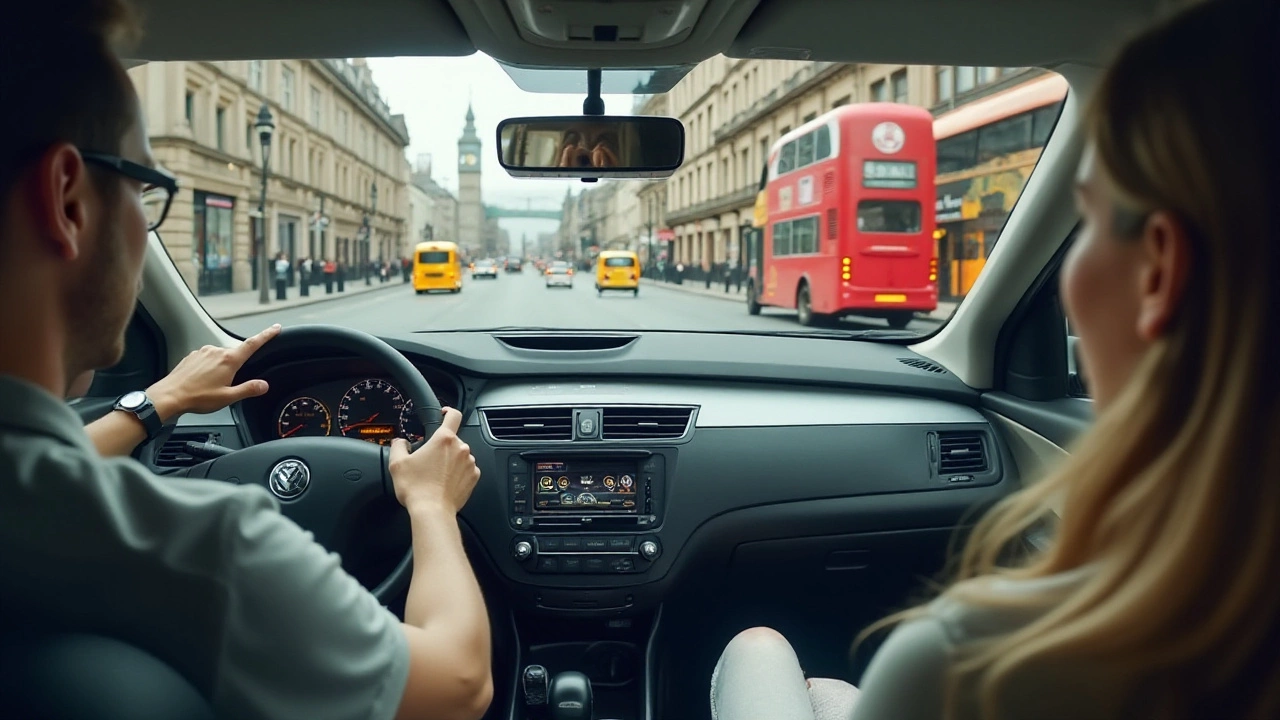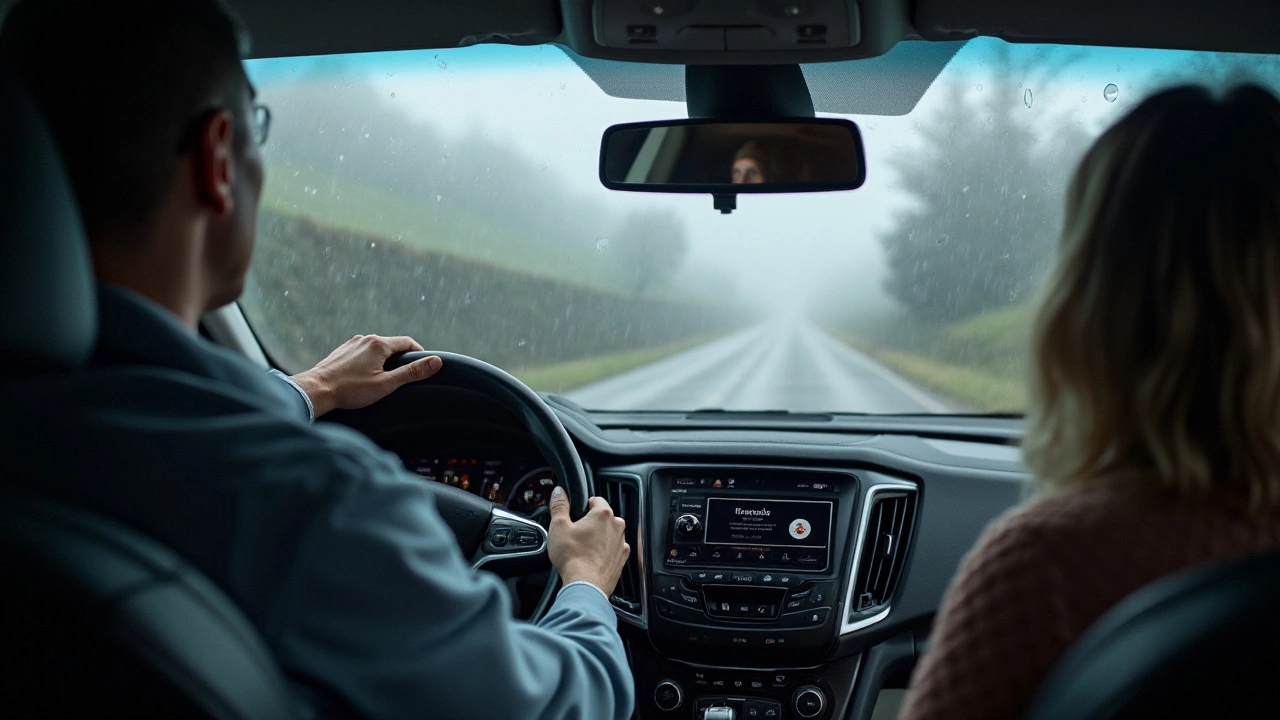Navigating the world of driving lessons can be quite the journey in itself. Many aspiring drivers find themselves weighing the pros and cons of different lesson durations, with 2-hour sessions often standing out as a popular option. But what makes these lessons so appealing, and more importantly, are they worth your time and investment?
In this article, we delve into the specifics of 2-hour driving lessons, exploring their benefits, potential challenges, and practical tips for getting the most out of them. Whether you're a beginner or brushing up on your skills, understanding the dynamics of these longer lessons is essential in making your driving education as effective and enjoyable as possible.
- The Advantages of 2-Hour Driving Lessons
- Challenges and Considerations
- Practical Tips for Learners
- Making the Right Decision
The Advantages of 2-Hour Driving Lessons
Choosing to embark on 2-hour driving lessons can offer a range of substantial benefits that are particularly appealing to learner drivers. One significant advantage is the ability for learners to immerse themselves more deeply in the learning experience. With a 2-hour session, the initial time that might otherwise be spent reacquainting with the instructor and getting comfortable in the vehicle can instead be used to dive promptly into practice. This extended practice time allows for an uninterrupted flow, which facilitates a more natural progression from simple to more complex skills within the same lesson. It also empowers learners to tackle a variety of driving situations they might encounter, from quick city driving to more relaxed rural routes, all in a single sitting. As a result, the continuity helps in bolstering confidence and skill retention.
Moreover, 2-hour driving lessons afford the opportunity to venture further from the starting point, exploring a broader range of roads and environments. This not only breaks the monotony of familiar routes but also prepares learners to handle the unpredictability of real-world driving more effectively. Such exposure is invaluable as it contributes to a driver's ability to quickly adapt to changing traffic patterns and diverse road conditions. The diversity of experiences in these extended sessions can significantly reduce the likelihood of anxiety when encountering new roads post-licensing. Additionally, with a longer duration, there's often room to revisit and reinforce areas where the learner may need extra attention, without the pressure of an impending lesson cut-off.
Another key benefit lies in the teacher-student dynamic. In a compact hour-long session, the rush to cover more ground might limit the time available for instructors to provide in-depth feedback. Conversely, a 2-hour block allows instructors to offer personalized guidance, noting strengths and addressing weaknesses with deliberate attention. Such detailed feedback can be critical for learners to fine-tune their driving skills. Interestingly, a study by the Driving Standards Agency suggested that learners who engage in longer lessons tend to pass their tests with fewer attempts. The enhanced focus and comprehensive feedback can contribute to a more streamlined learning journey, reducing both stress and costs in the long haul.
Given these advantages, the option of longer lessons becomes a prudent choice for those who aim for proficiency over simply passing the driving test. It also pays dividends in terms of fostering a mindset of lifelong safe driving. For this reason, many driving schools now advocate for 2-hour sessions, recognizing their potency in developing skilled and confident drivers. As one expert commented in a recent driving education symposium, "The gift of time allows both student and instructor to explore new territories of learning."
“The difference between confidence and competence is often just a few more minutes on the road.”

Challenges and Considerations
When contemplating 2-hour driving lessons, it's wise to weigh both the hurdles and factors that might impact their effectiveness. One significant challenge for many learner drivers is maintaining concentration over an extended period. Two hours on the road can sincerely test one's focus, particularly for those new to driving who aren't yet comfortable with constant vigilance required behind the wheel. This duration may become overwhelming, leading to mental fatigue which can hinder the learning process rather than enhance it. This is something that individuals should carefully consider when opting for longer lessons, as personal stamina levels vary greatly.
Financial considerations play a pivotal role when deciding on lesson length. While 2-hour lessons may appear more cost-effective per session, the upfront cost is notably higher. This might not align with everyone's budget, especially students or young adults. It's essential to balance the potential benefits of longer practice with what one can realistically afford. Additionally, these longer sessions may not always fit neatly into a typical schedule, requiring more planning and time management. Balancing these logistics with work, school, or personal commitments might present a challenge for some learners.
Another consideration is the variability of traffic conditions experienced during a lengthy lesson. While this can be beneficial—exposing learners to different traffic patterns and scenarios—it can also be a double-edged sword. Not every lesson will offer the diversity of road conditions that one hopes for; sometimes a significant portion of time can be spent in sedate or repetitive driving, offering less variety than anticipated. A report by the Institute of Advanced Motorists suggests, "Variety in training environments leads to more adaptable drivers." This implies that while 2-hour driving lessons can offer more time for such variety, it is not always guaranteed.
Instructor availability may also affect the feasibility of longer lessons. Some instructors prefer shorter, more frequent lessons to maximize scheduling and accommodate more students. It's crucial to communicate with your instructor to understand their preferred methods and ensure that their teaching style aligns with your learning needs. Learner drivers should not hesitate to inquire about their instructor's experience with longer sessions and verifying if there's a proven method in place to keep lessons engaging across the extended timeline.
Here are a few strategies to make the most out of 2-hour driving lessons:
- Plan your routes: Discuss potential routes with your instructor beforehand to ensure a mix of environments, from highways to residential streets.
- Take breaks: It’s okay to pause for a couple of minutes to refresh. Use this time to review feedback and adjust your approach.
- Set specific goals: Start each session with clear objectives to keep lessons focused and purposeful.
- Reflect: After each lesson, take time to reflect on what you learned and identify areas for improvement.

Practical Tips for Learners
Embarking on the journey to become a proficient driver can initially feel daunting, but with a few practical tips and the right mindset, success is within reach. One of the first things to remember is that 2-hour driving lessons offer a unique advantage by providing learners with the opportunity to experience a comprehensive driving session. During this time, you can practice various skills without the interruption that comes with shorter lessons. Take full advantage of this extended period by asking your instructor to cover a wide range of scenarios, from urban driving to highway navigation. This will prepare you for the unexpected, enhancing both your confidence and competence.
It's essential to keep a consistent schedule to maximize the benefits of 2-hour sessions. Regular lessons, ideally multiple times a week, help reinforce learning and improve muscle memory. Scheduling lessons at different times of the day can also be beneficial, since driving in distinct light and traffic conditions can broaden your experience. Incorporate reflective practices such as maintaining a learning journal to track your progress, noting down difficulties faced and triumphs achieved. This reflection aids in cementing knowledge and addressing specific areas that require improvement.
"The secret of getting ahead is getting started," said Mark Twain, capturing the essence of learning to drive; each lesson lays the groundwork for safe driving habits.Making the most of your sessions involves not only practicing techniques but mentally preparing for them too. Before each lesson, have a clear agenda of what you aim to achieve. Discuss this with your instructor to ensure that the lesson is tailored to your learning needs. This proactive approach allows for a collaborative learning experience, enabling you to make significant strides in your skills.
As you progress, actively seek feedback from your instructor to assess your strengths and pinpoint areas for growth. Constructive criticism should be welcomed as a tool for enhancing your driving abilities. Consider supplementing lessons with independent practices such as using driving simulators or apps that can provide a theoretical boost to your knowledge. Apps and simulators provide scenarios atypical driving lessons might not cover, such as rare emergency situations, which help you become a well-rounded driver. Remember, the more diverse your practice, the more prepared you'll be for the unpredictable nature of real-world driving.
Gathering insights and tips from others can expedite your learning curve. Engaging in online forums where learners and experienced drivers exchange experiences can provide you with additional strategies and encouragement. Test yourself with mock practical tests in similar conditions to the actual driving test environment. This familiarization can alleviate the anxiety often associated with testing day. Such comprehensive preparation matched with a pragmatic and reflective approach will not only make the learning process smoother but also can instill the enjoyment and confidence vital for lifelong safe driving. After all, the journey to mastering driving is as much about the attitude and approach as it is about the time spent behind the wheel.

Making the Right Decision
Deciding on whether 2-hour driving lessons are the best choice for you can seem like a daunting decision, but breaking it down step-by-step can actually make the process easier. Start by assessing your unique learning style. Everyone absorbs information at a different pace, and more extended sessions offer you the chance to dive deep into driving techniques rather than just skimming the surface. Whether you are a quick learner who thrives under pressure or someone who prefers slow and steady progress, understanding your learning preferences is crucial.
Imagine the scenario of being on the road, settled comfortably behind the wheel, where the clock isn't ticking. Two-hour lessons allow ample time for reviewing conditions like changing weather or heavy traffic, circumstances that a shorter lesson might miss. There's no rush to quickly finish one skill and move on to the next, which can actually hinder retention. Instead, you can acclimate to new information and practice it effectively.
"Longer lessons enable learners to get familiar with complex traffic patterns and varied environments without the pressure of a running clock." — Jane Adams, Certified Driving Instructor
It's also worth examining your budget and availability. Longer sessions can often mean a higher up-front cost, but they might reduce the total number of lessons needed as they allow you to master skills more effectively. Scheduling is another factor; you'll need to ensure these long sessions fit into your calendar without adding extra stress, as being mentally present during these lessons is key to success.
Driving practice in diverse conditions is another significant advantage of these extended sessions. For instance, embarking on a journey that involves highway, city, and rural settings all in one session provides invaluable hands-on experience. It's a unique chance to simulate a real driving day-to-day, which is especially beneficial as you near your driving test and begin feeling what it’s like to be a regular driver.
An analytical approach is essential when comparing 2-hour lessons with shorter ones. Consider creating a list of pros and cons for each option based on your circumstances. Talk to your previous instructors if possible, or seek advice from trusted peers to gather a well-rounded view. It’s also insightful to inquire with driving schools if they provide any form of feedback from past students who have taken 2-hour lessons.
Timing also plays an influential role; when spaced appropriately, these sessions can significantly boost your confidence and ability. Whether you choose to supplement your driving lessons with additional practice outside of formal sessions could depend on your progress inside these longer durations. Use available online resources like driving forums and apps to track progress and set achievable targets for each lesson.

